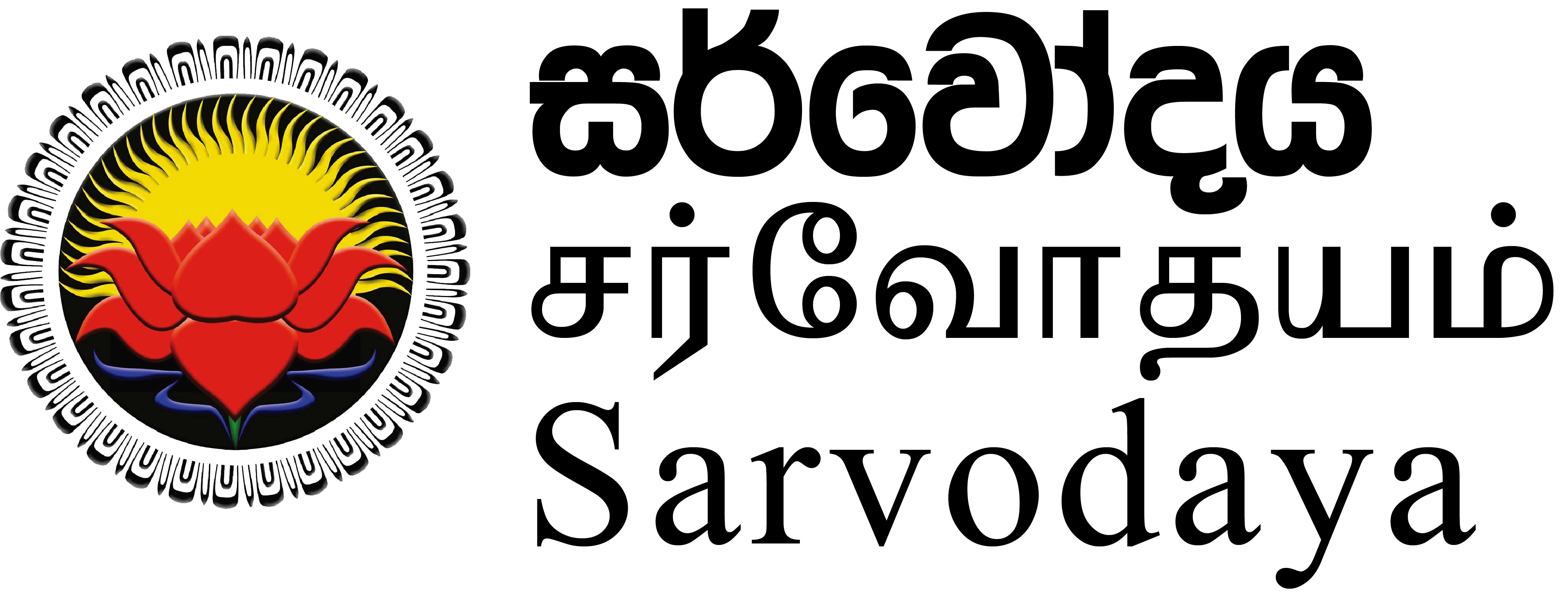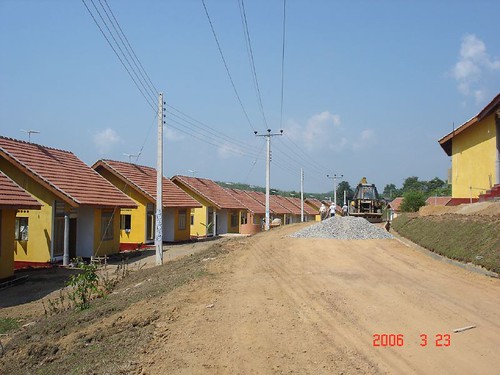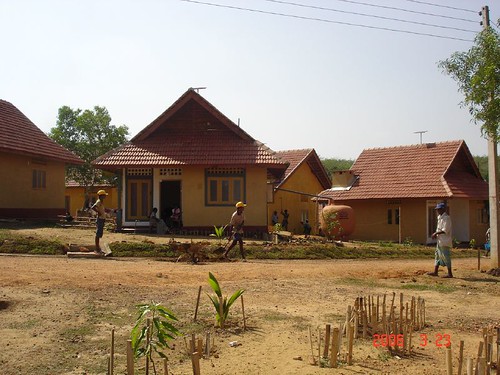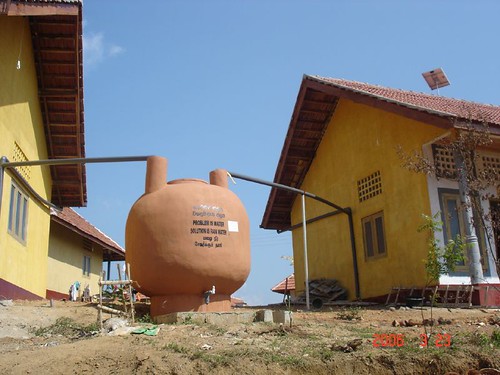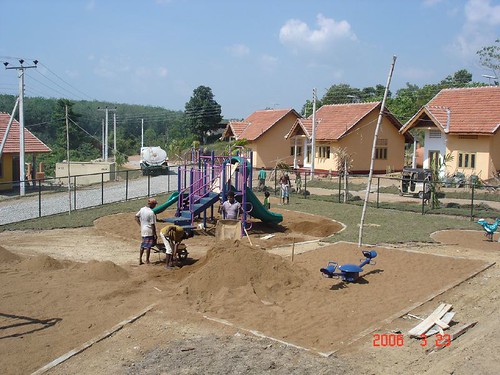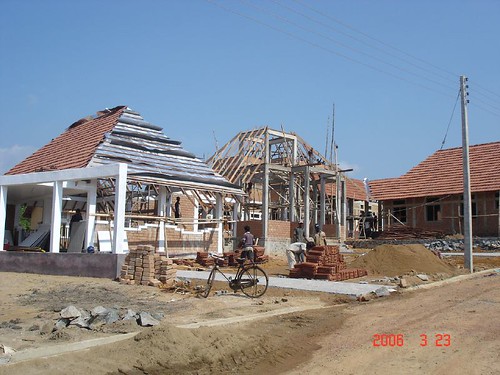Sarvodaya Eco-village development pilot project has been designed and introduced for 55 poor tsunami affected families in Kaluthara District in the western province of Sri Lanka as an innovative model of participatory development to address environmental sustainability. The pilot project is primarily financed by Sarvodaya with contributions for specific components of the eco-village by the American Joint Jewish Distribution Committee (AJJDC), USAID, Bush Clinton Tsunami Fund, the United Nations Environment Programme, the Asia Pacific Forum for Environment and Development (APFED). The early design advice was given by world renowned permaculture experts from Australia Max Lindegger and Lloyd Williams of Ecological Solutions and Global Eco-village Network (GEN). The architectural designs were by Mr.Chandana Edirisuriya, a Sri Lankan Chartered Architect.
Work has begun on the eco-village on 4th of April 2005 and the village will be officially declared opened by His Excellency the President of Sri Lanka Mahinda Rajapakse on 28th March 2006.
Project area
The project is being implemented in Lagoswatta village in Kalutara District in the Western Province. The Lagoswatte resettlement is one of the projects initiated by Sarvodaya in order to support tsunami affected families. The building site of 8 acres allocated by the Government of Sri Lanka, is a beautiful piece of land on a gentle slope bordering a rice field on the lower side. The project consists of construction, recreation, livelihood support, environmental conservation etc. A feature of this resettlement is its focus on ecological and sustainability. Accordingly there are several eco-elements such as eco-friendly houses, biodiversity, the use of solar energy, recycling of waste etc. which are built into this project and project will under go according to the United Nation Development Programme (UNEP) guidelines for construction of eco-houses in tsunami affected regions of Asia.
The total population will settle down in the eco-village is 245 and the number of house holds will be 55. Main livelihood activities of these recipients are fish merchants, carpenters, masons, labours, drivers etc. Although they have lost everything because of tsunami they are willing to continue same activities and Sarvodaya giving friendly hand to uplift their living condition.
Definition of the Eco-village
Eco-villages are communities striving to create cooperative lifestyles in harmony with their local environments. Important features of the eco-village are developing and refining social and ecological tools such as consensus decision making, inter-generational care, alternative economic models, whole systems design, permaculture practices, renewable energy systems, and alternative modes of education that offer positive visions and real-life solutions for humanity and the planet.
Vision of Damniyangama
Development of a self sufficient ecological way of life that a group of people of similar intention can live on. It’s about respect of all life, sharing resources, serves as an ecological center for ecological resources. Together we can vision and bring in to action healthy ways of living on the planet.
Goals
Human activities are harmlessly integrated into the natural world in a way that is supportive of healthy human development and can be successfully continued into the indefinite future.
- Cyclic use of material resources
- Use of renewable energy sources
- Composting of organic waste
- Roof top capture of rain water will contribute to production of fruit and vegetables
Objectives
The overall development objective of the pilot is to test an innovative model that is environmentally friendly, operationalizes participatory planning at the village level, empowering communities to take effectively their own decisions thus leading to environmentally sustainable development.
- Resettlement of the tsunami affected families in a security and beauty of a productive garden
- Build a sustainable environment for living. By promoting environmental awareness among resident and encouraging public participation in environmental initiatives
- As an educational ground for future eco-village development.
Demonstrate practices that ensure a high quality of life for village participants while ensuring locally sustainable development, conservation of bio diversity of natural resources and self sustainability through social, economic, geological and climatic changes. - Communities will empowered and motivated to work on their own felt development needs and will take their own creative and innovative decisions with least intervention of external agencies. There will be better targeting of the development programmes towards the vulnerable groups within the community.
- Leaving operations and management (O & M) responsibilities of village infrastructure with the village communities will increase the efficiency of services delivery with enhanced recovery of O & M charges and user satisfaction.
Involvement of the community towards the project progress
Decision making
A Sarvodaya Shramadana Society has already been established and that will act as main decision making body of the eco village. Concept was based on community Driven Development and the society selects what they need in an eco village. Sarvodaya workers are doing only the facilitation role and necessary capacity building trainings already started for them to improve there ability to make decision.
Infrastructure development
There is a community contribution for infrastructure development in the village. Although they have lost every thing because of tsunami they are giving their contribution as skilled and unskilled labour force. Since indirectly it will increase the social accountability as well as it will help to develop the ownership of the development project. When comparing our past experience that, if some one come and build the multipurpose center they will not much care about it, because there is no ownership. But in here there is contribution from the society and it will increase the sustainability.
Cultural programmes
Youth and children societies were established and they are actively participating with the cultural events organized by the Shramadana society. There are several cultural events organized for the opening ceremony by the with society.
A holistic approach and a model
Sarvodaya’s spiritually based approach to development plus careful planning involving the community, appears to be paving the way to successful integration in this unique situation. The Experience gained should prove beneficial to Sarvodaya and other organizations that will likely face similar situations in future.
With the construction of approximately 340 homes completed one year after the tsunami, Sarvodaya has done an outstanding job, especially when the scope of their ongoing work is considered. From the twelve areas of tsunami focus, to the programs throughout Sri Lanka that benefit millions of people, Sarvodaya has demonstrated how to get things done.
